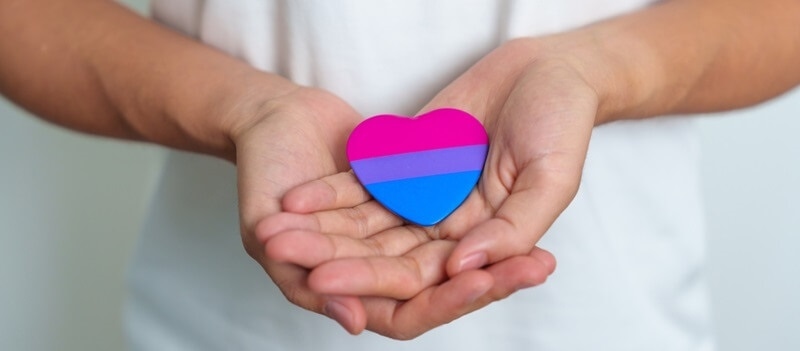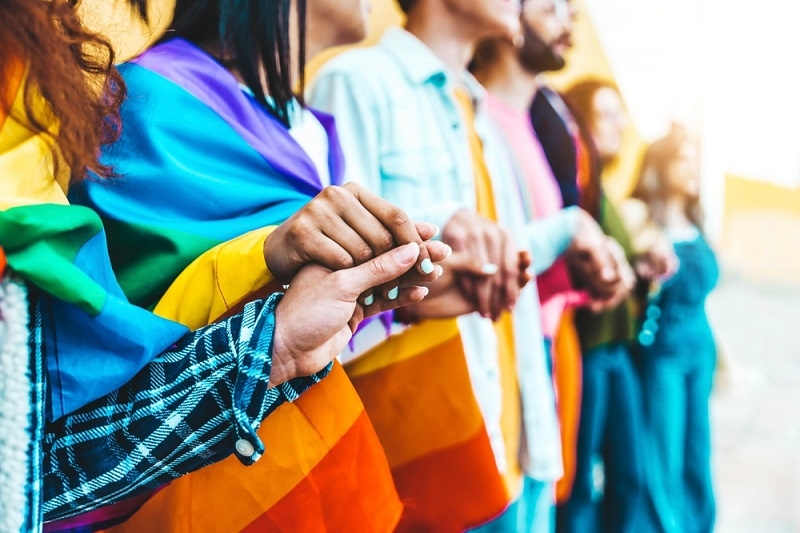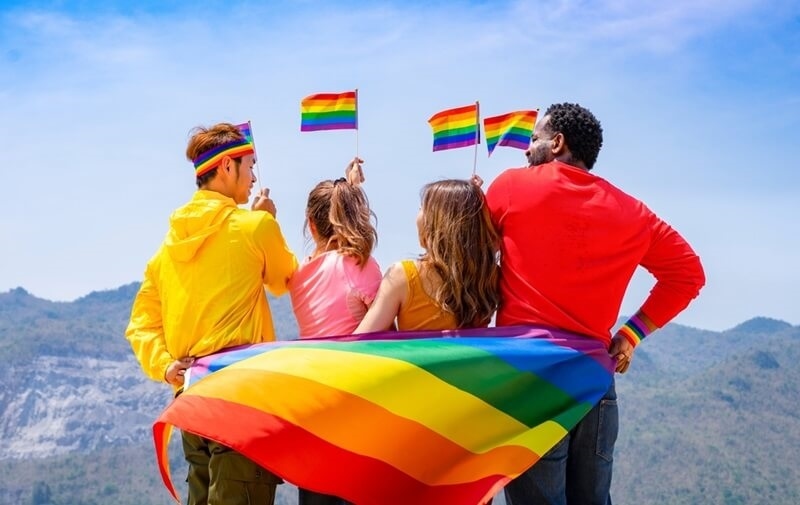What is the Transgender Flag, and What Does it Represent?

The transgender flag is a symbol of pride and visibility for the transgender community. It was created in 1999 by transgender woman Monica Helms, who sought to create a symbol that would represent the diversity and unity of the transgender community. The flag features five horizontal stripes in pastel colors, with the colors representing different aspects of the transgender experience. The light blue stripe represents the traditional color for baby boys, the pink stripe represents the traditional color for baby girls, and the white stripe represents those who are intersex, transitioning, or have a neutral gender identity. The flag has become an important symbol of transgender identity and is recognized around the world.
History and Evolution of the Transgender Flag: From Its Inception to Present Day

The transgender flag has a rich history and has undergone several changes since its creation in 1999. Created by transgender woman Monica Helms, the flag was designed to provide a unifying symbol for the transgender community. The first transgender flag featured two horizontal stripes in blue and pink, representing traditional gender colors, with a white stripe in the middle to represent those who are intersex, transitioning, or have a neutral gender identity. This flag was a simple but powerful representation of transgender identity and quickly gained popularity within the community.
However, over time, the transgender community began to call for a more inclusive and diverse flag that would represent the various experiences and identities within the community. In 2014, designer and activist Emily Gwen created a new version of the flag that featured five horizontal stripes in pastel colors, with each color representing a different aspect of the transgender experience.
The light blue stripe represents the traditional color for baby boys, the pink stripe represents the traditional color for baby girls, and the white stripe represents those who are intersex, transitioning, or have a neutral gender identity. The two additional stripes, one in pale pink and one in pale blue represent non-binary individuals and those who identify outside the gender binary. This new flag quickly gained popularity and has become the dominant symbol of the transgender community. It has been embraced by transgender individuals and allies around the world and has been used in various settings, from protests to pride parades, to promote greater visibility and awareness of transgender identity.
However, the transgender flag has not been without controversy. Some individuals within the transgender community have criticized the flag for not adequately representing the diversity of experiences within the community. For example, some individuals have argued that the flag does not represent transgender people of color or those from different cultural backgrounds. As a response to these concerns, various alternative flags have been proposed that seek to represent a more diverse and inclusive range of experiences within the transgender community. One such flag is the transgender pride flag designed by transgender activist and artist Monica Helms. This flag features a blue and pink stripe, similar to the original transgender flag, but with a white stripe in the middle that is larger and curves at the bottom to represent those who do not identify as male or female.
Other alternative flags include the Transgender People of Color Pride flag, which features stripes in black, brown, and white to represent the different skin tones of transgender people of color, and the Transgender Community Progress Pride flag, which features additional stripes in black, brown, pink, light blue, and white to represent marginalized communities within the transgender community.
Regardless of the various iterations of the transgender flag, it remains an important symbol of transgender identity and visibility. It has played a crucial role in promoting greater understanding and acceptance of transgender individuals and continues to inspire individuals to embrace their identities and promote greater equality for all.
Celebrating Transgender Visibility: Exploring the Impact of the Transgender Flag

The transgender flag has become an increasingly important symbol of transgender visibility and acceptance. Its distinctive colors and design serve as a unifying symbol for the transgender community, providing a visual representation of transgender identity and experiences. One of the key roles of the transgender flag is to promote greater visibility and awareness of transgender identity. By flying the flag at events such as pride parades, protests, and rallies, individuals and organizations can demonstrate their support for transgender rights and show that they stand in solidarity with the transgender community.
The transgender flag has also played a crucial role in promoting greater acceptance of transgender individuals. By creating a visible symbol of transgender identity, the flag has helped to challenge stereotypes and misconceptions about transgender people and promote greater understanding and acceptance. In addition, the transgender flag has served as an important tool for building community and creating a sense of belonging among transgender individuals. By providing a unifying symbol for the diverse experiences and identities within the transgender community, the flag has helped to create a shared sense of identity and purpose.
Another key aspect of the transgender flag is its symbolism. Each of the five stripes represents a different aspect of the transgender experience, providing a powerful message about the complexity and diversity of transgender identity.
The light blue stripe represents the traditional color for baby boys and is meant to represent the masculine aspect of transgender identity. The pink stripe represents the traditional color for baby girls and is meant to represent the feminine aspect of transgender identity. The white stripe in the middle represents those who are intersex, transitioning or have a neutral gender identity, reflecting the diversity of experiences and identities within the transgender community. The two additional stripes, one in pale pink and one in pale blue represent non-binary individuals and those who identify outside the gender binary. These stripes reflect the growing recognition and acceptance of non-binary identities within the transgender community and society at large.
Overall, the transgender flag has had a profound impact on the visibility and acceptance of transgender individuals. By providing a powerful symbol of transgender identity and experiences, the flag has helped to promote greater understanding, acceptance, and inclusivity for all members of the transgender community. However, there is still much work to be done to ensure that transgender individuals are fully accepted and supported in all aspects of society. Discrimination and prejudice against transgender individuals continue to be significant problems, and transgender individuals face disproportionate levels of violence, discrimination, and harassment.
How the Transgender Flag is Challenging Gender Norms
The transgender flag, with its distinctive colors and design, is challenging traditional gender norms and promoting a more inclusive understanding of gender identity. By featuring pastel colors traditionally associated with femininity and masculinity, the flag is breaking down the binary understanding of gender and celebrating the diversity of gender expression. One of the key ways in which the transgender flag challenges gender norms is by promoting greater visibility and awareness of transgender identity. By flying the flag at events such as pride parades and protests, individuals and organizations can demonstrate their support for transgender rights and show that they stand in solidarity with the transgender community.
The flag also challenges gender norms by providing a visual representation of the complexity and diversity of transgender identity. Rather than adhering to a strict binary understanding of gender, the flag acknowledges the existence of non-binary and gender non-conforming individuals who may identify outside of the traditional male/female binary. Furthermore, the flag challenges gender norms by celebrating the diversity of gender expression. By incorporating both traditionally masculine and feminine colors, the flag promotes a more nuanced and inclusive understanding of gender, recognizing that individuals may express their gender identity in a multitude of ways.
The flag's symbolism also challenges gender norms by highlighting the importance of individual autonomy and self-expression. The white stripe, which represents intersex, transitioning, or neutral gender identities, reflects the idea that individuals have the right to define their gender identity on their own terms, free from societal expectations or pressures. Overall, the transgender flag is challenging traditional gender norms and promoting a more inclusive understanding of gender identity. By celebrating the diversity of gender expression and acknowledging the existence of non-binary and gender non-conforming individuals, the flag is helping to break down the binary understanding of gender that has long been entrenched in our society.
However, there is still much work to be done to ensure that transgender individuals are fully accepted and supported in all aspects of society. Discrimination and prejudice against transgender individuals continue to be significant problems, and transgender individuals face disproportionate levels of violence, discrimination, and harassment.
Conclusion
The transgender flag is a symbol that represents the transgender community and is recognized worldwide. It was created by transgender woman Monica Helms in 1999 with the aim of creating a unifying and visible symbol for the community. The flag features five horizontal stripes in pastel colors, with each color representing a different aspect of the transgender experience. The flag has become a powerful symbol of transgender pride and visibility, promoting greater understanding and acceptance of transgender individuals. Its use in various settings, from protests to pride parades, has helped to increase the visibility and awareness of the transgender community.























